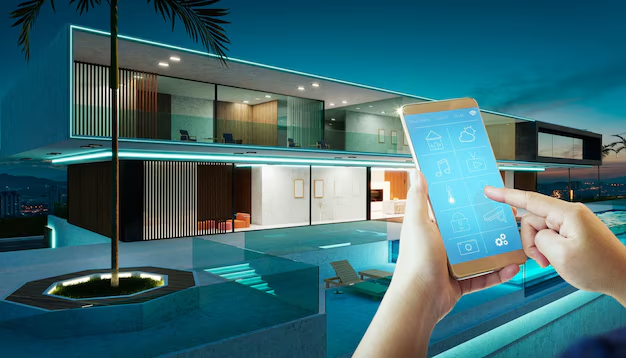In recent years, the concept of a smart home has become increasingly popular. With advancements in technology, transforming your living space into a smart home is no longer a distant dream but an achievable reality. A smart home offers convenience, energy efficiency, security, and entertainment, all at the touch of a button. If you are considering building your own connected space, follow this step-by-step guide to get started.
Step 1: Plan Your Smart Home Ecosystem
Before purchasing any devices, it’s important to plan your smart home ecosystem. Consider what areas of your home you want to automate—lighting, security, entertainment, or temperature control. Mapping out your needs and goals will help you choose compatible devices. Additionally, decide which platform you want to use (Amazon Alexa, Google Assistant, Apple HomeKit, etc.) as most smart devices are built to integrate with one of these platforms.
Step 2: Choose a Hub and Platform
To control your devices seamlessly, you’ll need a smart home hub. A hub serves as the central point that connects all your devices, making them interact with one another. Some popular hubs include Amazon Echo, Google Nest Hub, and Samsung SmartThings. Ensure that the hub you choose supports the devices you plan to install and is compatible with your chosen platform.
Step 3: Start with Smart Lighting
One of the easiest ways to introduce smart technology into your home is by installing smart lighting. Smart bulbs allow you to control the brightness, color, and schedule lighting with your voice or phone app. Brands like Philips Hue and LIFX offer a wide variety of options. You can set moods, create automated schedules, or even sync lighting with your entertainment system.
Step 4: Enhance Security with Smart Cameras and Locks
Security is a top priority for many homeowners, and smart security systems provide peace of mind. Install smart cameras, video doorbells, and smart locks to monitor your property remotely. Devices from Ring, Nest, and Arlo provide real-time video feeds, motion detection alerts, and two-way audio, giving you control of your security from anywhere in the world.
Step 5: Automate Temperature Control with Smart Thermostats
Smart thermostats such as Nest and Ecobee enable you to adjust your home’s temperature from your smartphone or voice assistant. These devices learn your preferences over time and adjust the temperature based on your habits, improving energy efficiency and comfort. You can also set schedules to reduce energy consumption when you’re away from home.
Step 6: Add Smart Entertainment Systems
Next, consider upgrading your entertainment system. With smart TVs, streaming devices like Amazon Fire Stick and Roku, and voice-controlled speakers like Amazon Echo or Google Home, you can create an immersive and connected media experience. Control your music, movies, and shows with voice commands or through an app, and sync everything for seamless entertainment.
Step 7: Integration and Automation
Once you’ve installed your devices, you can further enhance your smart home by setting up automation. For example, you can program your lights to turn on when you arrive home or have the thermostat adjust when you’re near. Platforms like IFTTT and SmartThings allow you to create custom routines and automation for a truly connected experience.
FAQs
- What is the best smart home platform? It depends on your needs, but Amazon Alexa, Google Assistant, and Apple HomeKit are the most popular.
- Are smart homes safe from hacking? Smart homes can be vulnerable to hacking, but using strong passwords and enabling encryption can reduce the risks.
- Do smart devices work without Wi-Fi? Most smart devices need Wi-Fi to function, but some may offer limited offline functionality.
- What is the most essential smart home device? Smart lighting and smart thermostats are often considered the most useful starting points.
- How much does it cost to build a smart home? Costs vary depending on the devices you choose, but building a basic smart home could cost anywhere from $200 to $2,000.
- Can I control my smart home when I’m not at home? Yes, as long as your devices are connected to the internet, you can control them remotely.
- Do I need a smart home hub? While not necessary, a hub simplifies the integration and control of multiple devices from a single platform.
Conclusion
Building a smart home is an exciting venture that enhances convenience, security, and energy efficiency. By following these simple steps—planning your ecosystem, choosing a hub, and installing key devices like lighting, security cameras, and thermostats—you can create a connected space tailored to your needs. With a little investment and research, your home will soon be a hub of innovation.

